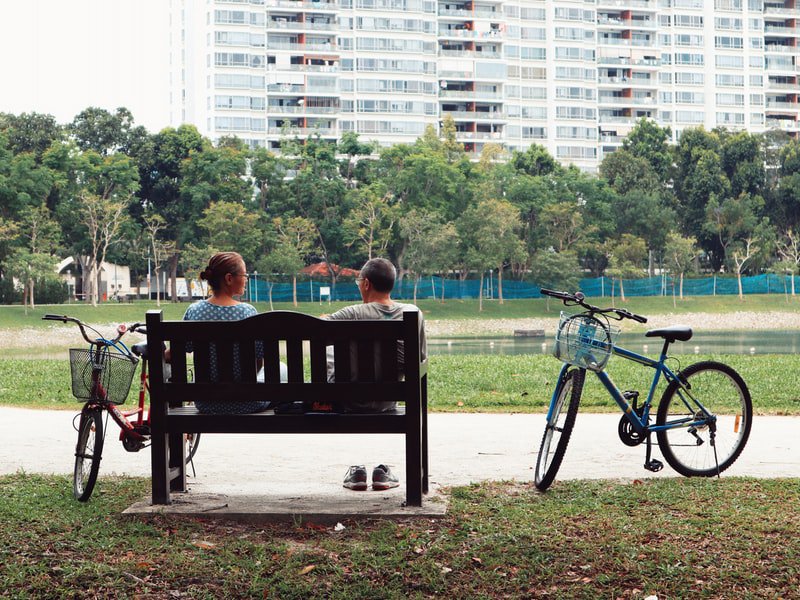For example, if you bring home $3,500 per month after CPF deductions, and your monthly expenses equate to $2,000 on average.
This means about $1,500 per month of discretionary funds – money that could go to your retirement or entertainment.

How much do retirees in Singapore really need for our day-to-day living expenses?
This is not an easy question to answer, which is why many people may neglect retirement planning in favour of more pressing financial considerations. Think wedding, home renovations, yearly holidays, a car, etc.
Jumpstarting the retirement conversation, researchers from the Lee Kuan Yew School of Public Policy (LKYSPP) conducted a study in 2019 to determine the Minimum Income Standard (MIS) that elderly persons in Singapore would require.
For clarity, the MIS is a consensus-based research methodology used to determine the household income required for a basic standard of living that matches a household's location and economy. In plain words, it defines what a person or household needs on a monthly basis, taking into consideration individual needs as well as to align themselves with society.
The number they arrived at: $1,379 per month for an elderly person living alone and $2,351 for elderly couples.
Only you can answer if this is too high or too low?
If we compare $2,351 to Singapore's median household income in 2020 – which was $9,189 – it may look like a stretch to spend just one quarter of what median households are earning here.
However, when we look at another statistic, the average expenditure of retiree households in 2017/18 – which was $1,970 – it seems entirely possible to survive on $2,351 a month. In fact, if we look at the 1st to 20th quintile of retiree households in the same report, they spent an average of just $618 a month, while the 61st to 80th quintile spent $1,975. It's only the top 20% of households that spends $4,875 a month – significantly higher than the MIS.
Consider your own costs of living
Approximately 80% of retiree households in Singapore are spending below the MIS level. However, you have to determine your own expenditure requirements as statistics can never provide the full picture or one that applies to everyone.
Comparing against the median income level may be an inappropriate gauge. When we look at expenditure levels, looking at just retiree households may neglect to account for households with working adults supporting their retired parents.
The average household expenditure for the bottom 20% of households in Singapore is $2,570 in 2017/18. This means anyone who wishes to live on the MIS has to lower their expenditure level to the average of the bottom 20% of households in Singapore – which may seem difficult and not something we want after working hard for about four decades of our lives.
Planning for the income standard you want, rather than the minimum income standard
To begin with, many of us may not want to lower our standard of living in our retirement years, especially after working so hard and becoming accustomed to such a lifestyle. It may be even harder if you aspire to enjoy some luxuries in your retirement.
You can start the process of planning for the income standard you want by calculating how much you are already spending on accommodation, food, groceries, clothes, healthcare, transport, communication, utilities, and even additional costs like taking care of a loved one. Majority of these expenses will still need to be afforded in your retirement if you wish to live at your current standard of living. At the same time, you can cut out certain expenses that you may not have in retirement, perhaps your mortgage that you would have paid off and expenses for work, such as transport, meals and clothing. Of course, you may have also to spend more because you have so much more free time outside of work – so don't ignore this part of your retirement.
Next, consider how much you earn and how much you are able to save every month towards your retirement.
The more you put towards retirement, the more you will be able to enjoy in retirement. Also, while you're observing your monthly expenses, ssee if you can cut out anything that is unnecessary. Any luxuries that you can live without in retirement, you should try to live without today. It just makes the transition from your working life to your retirement life easier, and you have that extra funds to put towards building a larger retirement pot.
Remember, anything you save and invest today will feel like you're taking away from yourself. But the good news is that it will be helpful to your future self.
Another common error is neglecting inflation and medical needs in your golden years. Costs of the things we buy today will likely increase next year, and the year after, and the year after that. Just ask your parents.
At the end of the day, you don't want to be left in a situation where you'll have to take up a part time job or drastically reduce your standard of living halfway through your retirement because your nest egg may not last.
Adding layers of safety nets as your retirement plan
The first and most obvious safety net is your CPF. You contribute a hefty chunk of your salary each month and will be able to drawdown from CPF LIFE in your senior years. This is primarily meant to provide you with a basic standard of living in retirement.
Next, you're also contributing to another large asset throughout your working years – your home. If required, there are several ways you can unlock this asset in your retirement. The easiest ways to do this is by a) renting out spare rooms once your children leave to start their own families; b) sell back part of your HDB housing lease to encash unrequired lease; or c) downgrade to a smaller home.
While working, you would also have spare cash left over at the end of the month. Part of this must be used to invest to build your retirement nest egg. You don't want to wait till the final stretch of your career to realise this. Ideally, you should start from your first paycheque.
If you're not sure how to start, the AIA Pro Lifetime Protector (II) is an investment plan that helps take the complexities out of investing. We help you avoid pitfalls of emotional investing and timing the market through three Guided Portfolios – "adventurous", "balanced", or "cautious" – offering you access to various risk levels to optimise your returns for the long-term.
At the same time, we also create another layer of safety net for your loved ones. With comprehensive coverage on your investment plan, it ensures that you and your loved ones are protected in the unfortunate events of death, disability or multi-stage critical illnesses – that rob you off your ability to build this nest egg for you and your loved ones.


